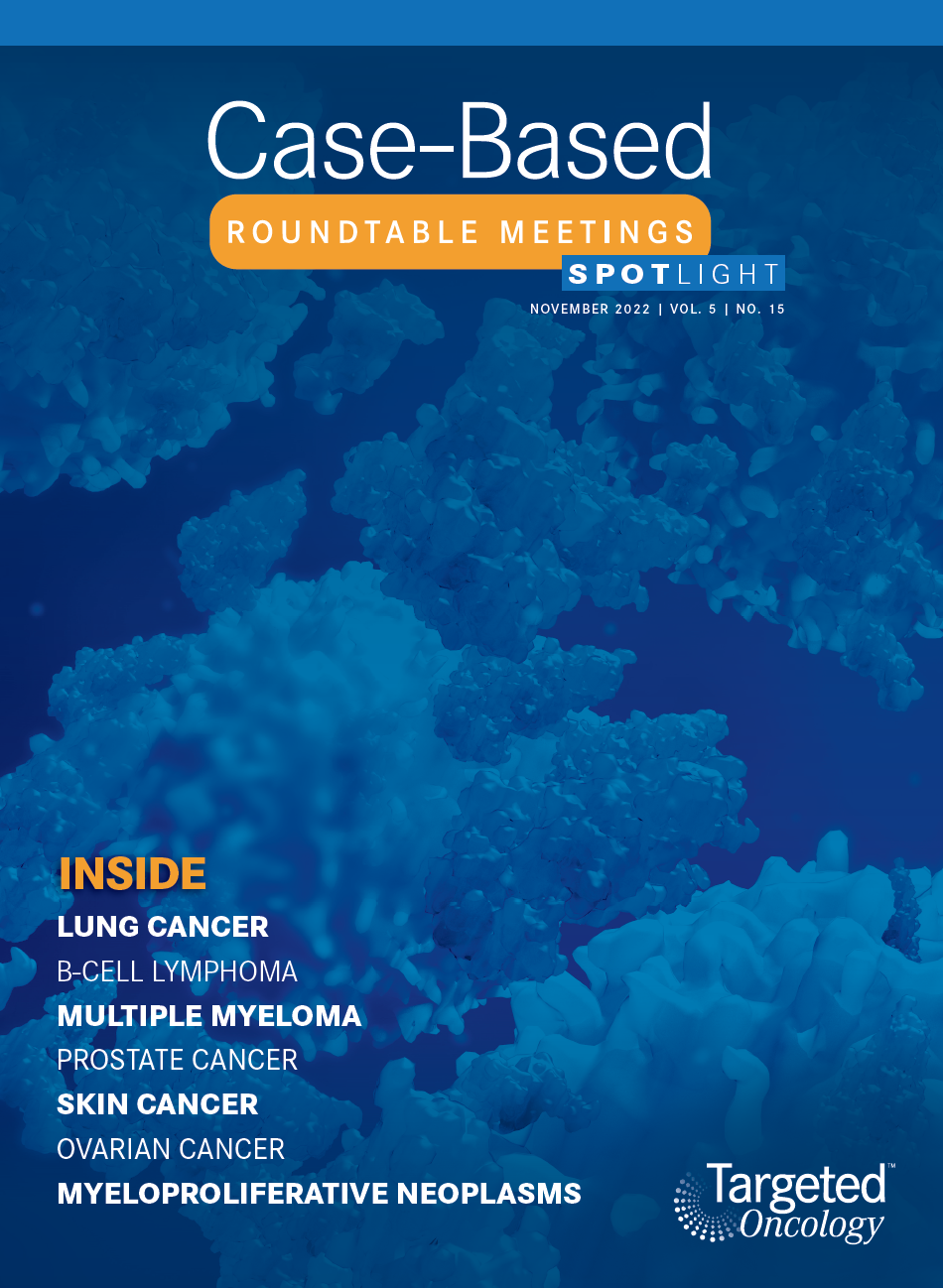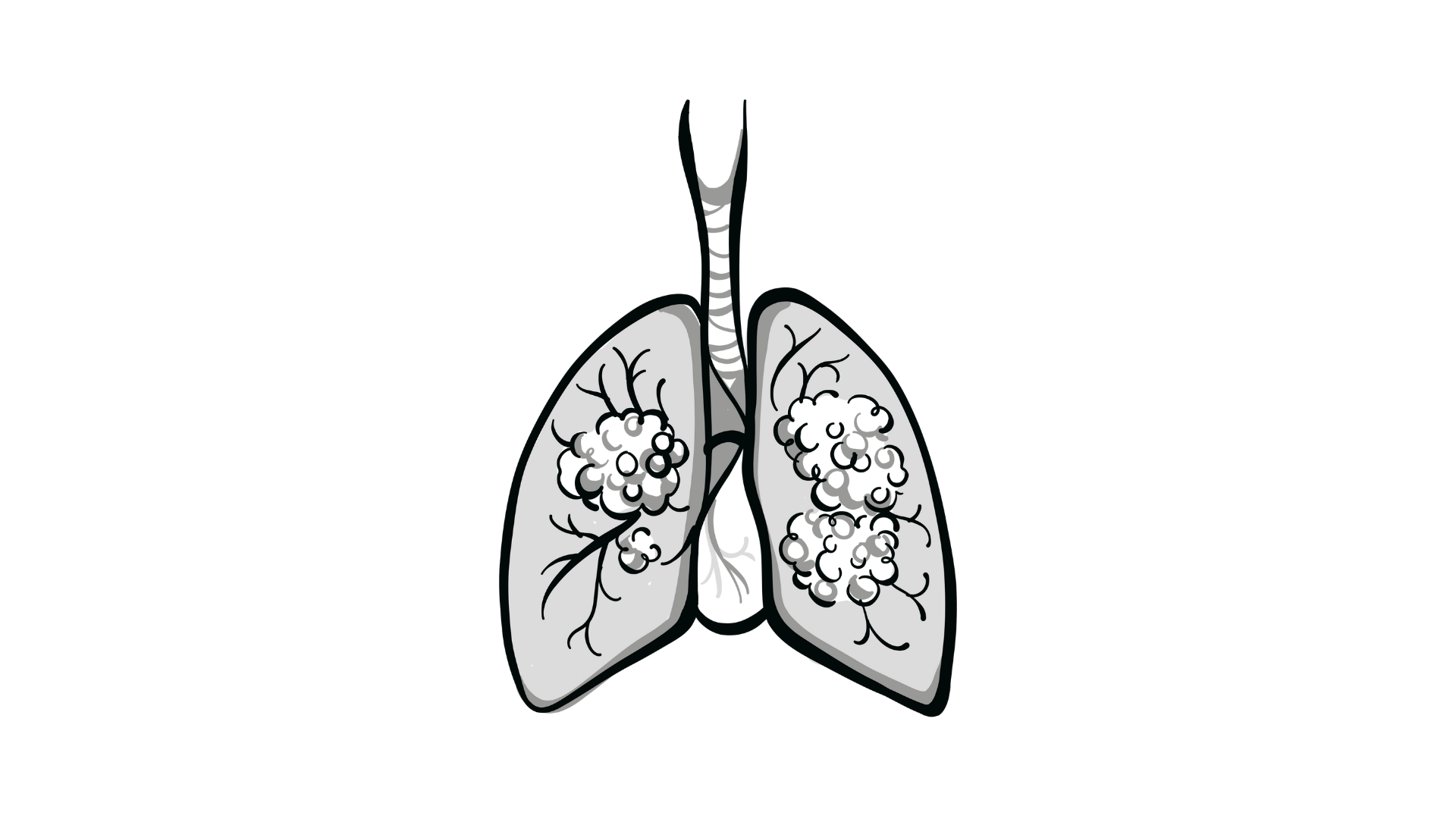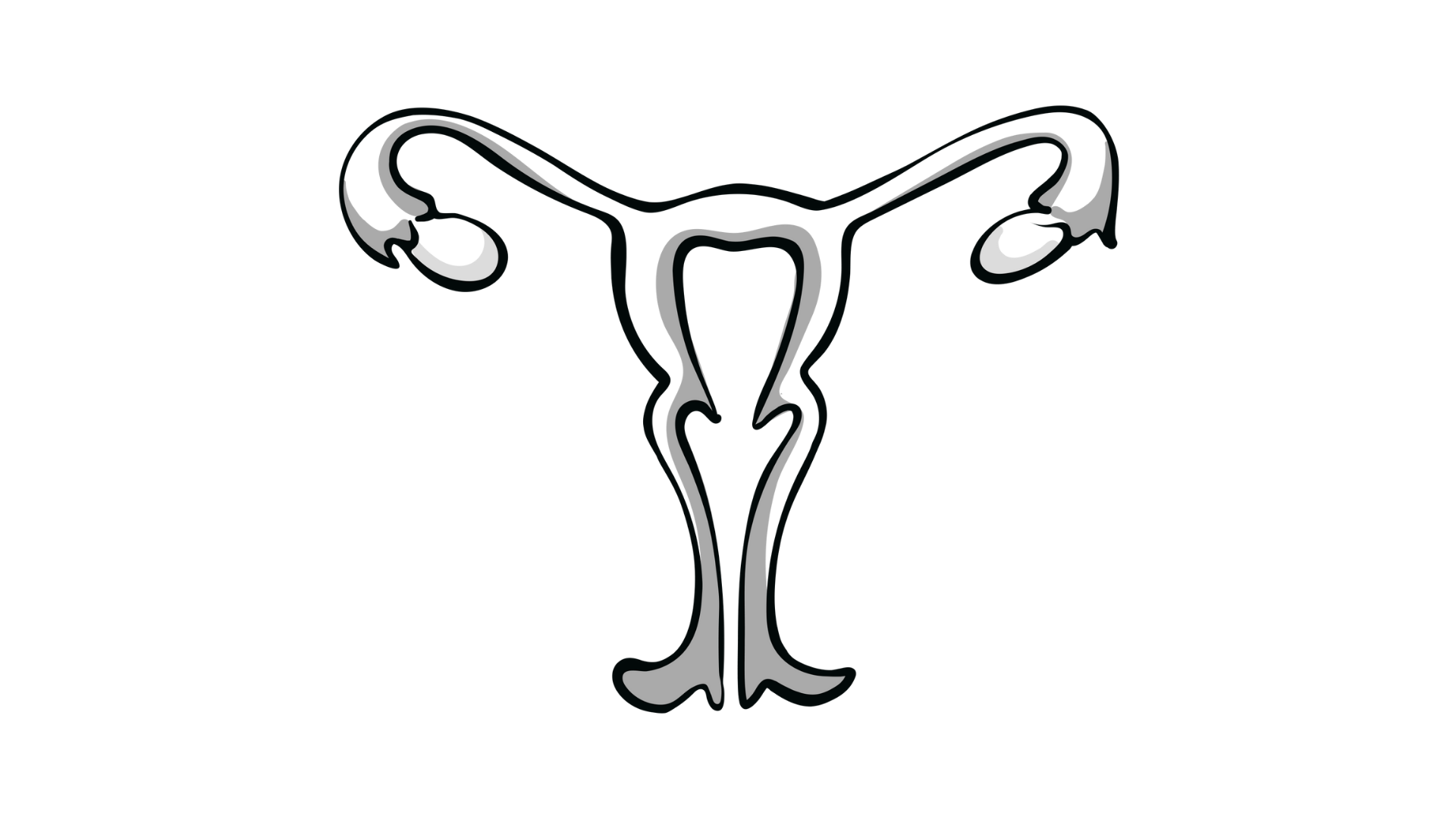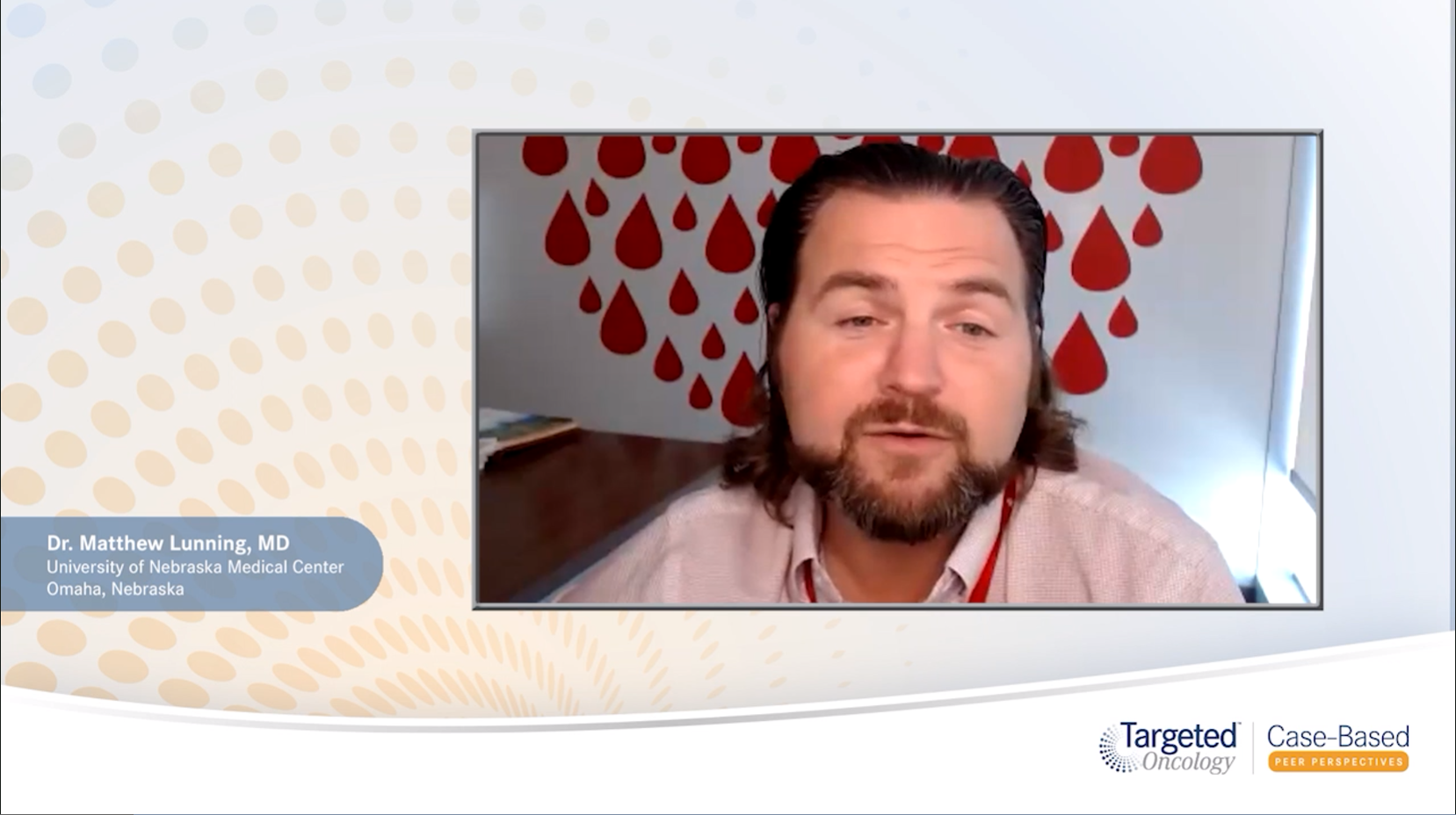Roundtable Discussion: Ayyappan Breaks Down New and Emerging Approaches in DLBCL
During a Targeted Oncology case-based roundtable event, Sabarish Ayyappan, MD, discussed with participants which therapy would be appropriate for an older patient with relapsed/refractory diffuse large B-cell lymphoma.

Sabarish Ayyappan, MD (Moderator)
Clinical Assistant Professor of Internal Medicine-Hematology, Oncology, and Blood and Marrow Transplantation
Department of Internal Medicine
Roy J. and Lucille A. Carver College of Medicine
University of Iowa Health Care
Iowa City, IA


DISCUSSION QUESTIONS
- What is your treatment strategy for this patient with relapsed DLBCL?
RANA: He would be almost 81…at this point, and I would prefer a regimen of tafasitamab [Monjuvi] with lenalidomide [Revlimid].
I think that would be the most tolerable regimen instead of trying more chemotherapy such as ICE [ifosfamide (Ifex), carboplatin (Paraplatin), and etoposide (Etopophos)], or rehab. I would go with tafasitamab and lenalidomide.
AYYAPPAN: Have you had any experience with that?
RANA: Not yet but I have read articles, and it seems like a tolerable regimen. Do you consider age when you think about eligibility for chimeric antigen receptor [CAR] T-cell therapy?
AYYAPPAN: Yes. What about the eligibility for CAR T? Do you refer older patients for CAR T?
RANA: I have, but this gentleman with lymphodepletion—it depends upon the base of disease. It looks like his disease progressed rather quickly. The leukapheresis and T-cell collection and generation would take 6 to 8 weeks, so he might not be an ideal candidate. If he was younger, and disease was not progressing that quickly, or at least he had some good response to GemOx [gemcitabine (Gemzar) and oxaliplatin (Eloxatin)] and rituximab, maybe I would have considered GemOx and rituximab as a bridge to CAR T-cell [therapy], in that case.
HUSSAIN: You know, our perception [is that] CAR T-cell treatment is quite toxic. We don’t have any exposure as community oncologists. Most of the time, high-risk or refractory [DLBCL], I usually send to a higher center: the University of Nebraska Medical Center. That’s what I usually do. Now, he is 81... is there any age limit for CAR T-cell [therapy]?
AYYAPPAN: No. The oldest patient we have given CAR T-cell therapy here is 81….It’s the upper limit for thinking about this patient. But I think in published studies, they’ve done up to age 83 [years], and maybe in one of the papers they did someone who’s 91, from France. Recently there was a paper that did a real-world analysis of patients who are less than age 65 [years] and greater than age 65 [years].1
If you choose the right patient—there is not much frailty, and they have a good support status—I think you could still do CAR T-cell [therapy], if they don’t have any comorbidities; for example, no chronic kidney disease or heart issues. Those are patients I would still try to see if you can, even at second or third line, try to look at CAR T. Further down the line…it becomes challenging because their disease is becoming more stubborn, or they are progressing fast. That’s why, if you are thinking about CAR T, think about it in earlier lines rather than later because [patients] may be fitter, and the disease may be also in a better shape at this point.
CASE UPDATE
He completed second-line GemOx plus rituximab, with partial response; 5 months later, he presented with overt disease progression.
DISCUSSION QUESTIONS
- Can you give CAR T on an outpatient basis?
- What about safety and toxicity with CAR T?
AYYAPPAN: You do the lymphodepleting therapy, and a lot of centers have even started doing outpatient CAR T, so patients are probably in the hospital for 10 to 14 days, just being monitored for cytokine release syndrome or neurotoxicity. Subsequently, [the patients] have managed to then see the outpatient, and sometimes they even try, particularly in Iowa where we have a lot of patients traveling from longer distances, to comanage with our community oncologists in getting transfusions and following up. It comes down to trying to get more education in medications.
But the other thing that comes with it are the long-term toxicities that we are learning more about. There are some cytopenias and B-cell aplasia that are prolonging, despite response, into the first or second year. Then there is the risk of COVID-19–related infection and infection complications that you must keep in mind in patients aged 73 [years] or older. In a younger patient, maybe that would be easier, but in an older patient, that would be a rather challenging thing to think about.
MUSHTAQ: Although [the patient] is 79…I would check with the CAR T center to see [whether] they have any availability for CAR T, and [whether] the patient will qualify. And though not 79, I did have a 71-year-old, quite healthy gentleman, so I braced him with polatuzumab [Polivy], bendamustine [Bendeka], and rituximab. I held the bendamustine until his cells were collected, and he was able to get CAR T, so I used it, but I haven’t used tafasitamab. So [do] we have to repeat the biopsy and confirm they have CD19, or should an initial biopsy be good enough?
AYYAPPAN: It depends. At first relapse, you are thinking about CAR T, you do not need to check for CD19. But if you used some CD19-based therapy it will come to that; like if you use tafasitamab or loncastuximab [Zynlonta], and then subsequently are thinking about CAR T, then it is important to look for CD19 expression. Although, studies have some data on, for example, either a few patients got CAR T after loncastuximab, or they did loncastuximab after CAR T.2,3 They were mostly checking for CD19 expression, and then they looked at the responses, but with my patients I usually try to look for a CD19 expression. You can do [this] on the flow. If the flow is sometimes inadequate, then they can even send [immunohistochemistry] testing and then you can look at the CD19 expression. There is no specific cutoff like you use for CD30 or like for c-MYC. As far as the CD19 expression, you can do that. The thing about CAR T is that in 30% of the patients, the reason CAR T fails is they lose the CD19 expression. That is why it would be important that you asked to look for a CD19 expression and then you use one of these therapies, and are thinking about [going] back to one of these therapies again down the line, for it to be CAR T.
What about patient preference or logistics? Have you had any issues with that? Patients traveling long distances? Any patients have any trouble like that, in terms of insurance coverage, or logistics?
FAHED: Logistics could be an issue. I think CAR T has been studied in patients above the age of 75 [years], and [who are] ineligible for stem cell transplant. I think that would be a good option at least, to refer them to the center [and] see [whether] they are eligible for CAR T. If they are not eligible for CAR T, tafasitamab plus lenalidomide is reasonable, and therapy with bendamustine, [rituximab] are also reasonable options. But I think his best option for long progression-free survival and better overall response rate is going to be with the CAR T cells.
AYYAPPAN: That’s true, yes. [Regarding] the CAR T, at this point in time, [the patient] wouldn’t have qualified with the current way that the axi-cel [axicabtagene ciloleucel (Yescarta)] has been approved, for the first relapse.4 For the second relapse, you could consider it, but [that depends] on his performance status and treatment preference. That’s what comes into your decision-making. Currently…axi-cel is approved at first relapse, and for second only if they are relapsed/refractory, or they failed within 12 months of initial diagnosis.
DISCUSSION QUESTIONS
- What’s your experience with combination tafasitamab and lenalidomide?
- Have you had any experience of sepsis or cytopenias? Or was the combination well tolerated?
HINSHAW: I’ve used it and I think it is very well tolerated. My patient is in…his second cycle, and so far, no toxicities.
ONWERE: I am using it on a patient with a triple-hit, so this is his second month, and he is doing well. He’s had good responses.
HAO: I used it [for] 2 patients recently. My patients are similar to the case we just discussed, as they are older gentlemen. One is 75, and the other is 79 and has relapsed/refractory disease. We used RICE [rituximab, ifosfamide, carboplatin, and etoposide] and got a relapse. Unfortunately, I didn’t have good experience with tafasitamab and lenalidomide. Both [patients] have severe fatigue and cytopenias.
For both [patients], I decreased the dose of lenalidomide but I didn’t start with 25 mg, I only started with 15 mg, even though their kidney functions were good. I was disappointed. After 1 cycle, they both went to hospice. They just couldn’t tolerate it. For one patient, I only gave him tafasitamab. I was just hopeful it would stabilize the condition and I would add the lenalidomide back. It is just the cytopenias. It’s very severe fatigue. The patients both had poor performance status.
AYYAPPAN: Did they have bulky disease?
HAO: Both had bulky disease. I think one part is probably just the refractory disease, the progression of the disease.
AYYAPPAN: I used to start with 15 mg or 20 mg, although the study will look, this time, at 25 mg [L-MIND, NCT02399085].5 They are older patients, and…even in myeloma you wouldn’t go with a higher dose in an elderly patient. You would start at a lower dose. Similarly for lymphoma, [you wan to go with] a little more conservative dose because I would want to keep them on therapy, rather than giving them a higher dose and them coming off therapy because of fatigue or cytopenias. I would start at a reasonable dose of 15 mg or 20 mg that they could tolerate. The other thing I have seen issues with is patients coming in weekly for the infusion of tafasitamab. Some of my patients would prefer to go with the others, the polatuzumab, the loncastuximab, just because of the weekly infusions. They would hate to come in for that.
I don’t know [whether anyone else has] had any issues, or discussions with your patients, in terms of the infusions, but the fatigue is mostly related to lenalidomide and the cytopenias [From the Data5]. Once they are through the lenalidomide phase—and I have not had any patients up to that 1-year mark—you can drop the lenalidomide and just continue the tafasitamab. I have mostly had patients getting up to the 7-[month] or 8-month mark, and then they progressed, not tolerating it, and stopped therapy. So far, I haven’t had any patient get to the 1-year mark, but I have a couple of colleagues who have had them, post CAR T, try tafasitamab and lenalidomide, then take them to allo-transplant, and got them into remission. So there have been a couple of success cases.

SORIANO: From the 3 different regimens, my initial thought would be, it seems the most effective is the tafasitamab and lenalidomide combination, with the longer response.
The part that I still struggle with is the length of having both drugs for 28 cycles before taking off the lenalidomide. I’m not sure anyone would be able to handle that.
AYYAPPAN: Twelve cycles, yes.
SORIANO: Yes, the combination of that. And the question would be, which CD19 [targeting therapy] do you pick? Because they haven’t been compared to see which is more effective. The loncastuximab data [also] seem like the poorer-prognostic patients, double-[hit] and triple-hit transformed patients.2 So, I’m curious to see how that one would work, in just a general refractory population.
FAHED: Well, all options are on the table. All are reasonable. At one point, probably all will be useful. I have experience with all, so if I must pick, I will go with the tafasitamab and lenalidomide. Then upon disease progression I would switch to something different.
AYYAPPAN: Still, it comes down to truly looking at the patient, and like I have mentioned, sometimes a weekly infusion doesn’t go well with some patients—I think Dr Hao had patients with issues of fatigue and cytopenia. If some patients do not tolerate one of them, then you may have to switch around to the other one.
But you have seen the data, that tafasitamab/lenalidomide has a durable response, at least at this point.5,6 The loncastuximab, also, is not too bad in terms of the patients who go into complete response [CR] that tend to remain in long-term response [LOTIS-2, NCT03589469].2 Then you can think about it more for your high-grade lymphoma, or transformed disease, those kinds of patients.
I think as we try to use more of these agents, and get more comfortable, you will be able to cycle between them and feel what would be the right regimen to go for. But, like I mentioned, I would try to order CD19 if you are thinking about CAR T, at least. Then, we have a lot more coming, like the bispecifics and other things too.
There will be a lot more in our discussions in the next few years, trying to see which is the better one, when to use the right one. And I think the bispecifics, unlike CAR T, might be something that the community oncologists will be able to administer. Because initially, [rituximab] came, and it was probably in the larger centers, and then eventually did come down to the community oncologists who could use it. Similarly, I feel that bispecifics, sometime down the line, might be something you will be using as well. There will be a lot more discussions on which will be the right regimens, and which way to go.
HINSHAW: That’s the million-dollar question: How do you sequence these regimens? It seems like everybody is favoring the tafasitamab and the lenalidomide. My concern is that, for example, if patients have a good response and then progress, it’s kind of hard at that point…to put them back on chemotherapy, the bendamustine and [rituximab], and polatuzumab.
The reason I like this regimen, and the patients that I have [who] progressed on second-line treatment, is because it is a kind of chemotherapy-free regimen for somebody who doesn’t have a great performance status. But I think that upon progression, the performance status will be even more poor, and it is hard to go back to a chemotherapy-based regimen. How do you sequence these?
AYYAPPAN: Mainly I look at the fitness, and the age, and what does the patient want? Even if the patient is 75 to 80 years of age, I will see [whether] they are still a CAR T candidate. If they are not then I would probably go with one of these, tafasitamab/lenalidomide, because of the durability of response that you may get with either tafasitamab/lenalidomide or the loncastuximab.
I see a lot of referrals too. Tafasitamab/lenalidomide or loncastuximab can be easily given by the referring community oncologist as well, so that is why I prefer one of these regimens to go with. GemOx is also something that patients 80 and older might still tolerate, which we have been using as well. I could still, at first relapse, use one of these options. Then at second relapse, I would go with one of these novel options, the tafasitamab/lenalidomide, or the bendamustine/rituximab [BR] with polatuzumab.
Even with a performance status of 2, I have treated a few patients with BR/polatuzumab, and they have tolerated it. It is not as bad as R-GemOx or RICE. Although you could always cut down the day-2 bendamustine and do a dose like day 1 of bendamustine, and hope the efficacy comes from your polatuzumab, because that still has a chemotherapy payload in it.
You can always cut down the day-2 bendamustine in the elderly age group, who are particularly sensitive. You could do a day-1 bendamustine and do the polatuzumab/rituximab. Again, the idea in the discussion should be that this is not with a curative intent. You are doing more of a palliative intent, at that time, and you are not going with a CAR T or autotransplant in that phase. As you know, the durability of the response is only about 9 or 10 months before they progress. So, unless they go to CR, then you are likely to use the tafasitamab or the loncastuximab, and they are likely to stay in remission, and that may be mostly your younger patients.
REFERENCES
1. Zettler ME, Feinberg BA, Phillips EG Jr, Klink AJ, Mehta S, Gajra A. Real-world adverse events associated with CAR T-cell therapy among adults age ≥ 65 years. J Geriatr Oncol. 2021;12(2):239-242. doi:10.1016/j.jgo.2020.07.006
2. Caimi PF, Ai W, Alderuccio JP, et al. Loncastuximab tesirine in relapsed or refractory diffuse large B-cell lymphoma (LOTIS-2): a multicentre, open-label, single-arm, phase 2 trial. Lancet Oncol. 2021;22(6):790-800.
doi:10.1016/S1470-2045(21)00139-X
3. Caimi PF, Ardeshna KM, Reid E, et al. The antiCD19 antibody drug immunoconjugate loncastuximab achieves responses in DLBCL relapsing after antiCD19 CAR-T cell therapy. Clin Lymphoma Myeloma Leuk. 2022;22(5):e335-e339. doi:10.1016/j.clml.2021.11.005
4. Yescarta. Prescribing information. Kite Pharma; 2022. Accessed September 30, 2022. https://bit.ly/3TnbNYu
5. Salles G, Duell J, González Barca E, et al. Tafasitamab plus lenalidomide in relapsed or refractory diffuse large B-cell lymphoma (L-MIND): a multicentre, prospective, single-arm, phase 2 study. Lancet Oncol. 2020;21(7):978-988. doi:10.1016/S1470-2045(20)30225-4
6. Duell J, Maddocks KJ, González-Barca E, et al. Long-term outcomes from the phase II L-MIND study of tafasitamab (MOR208) plus lenalidomide in patients with relapsed or refractory diffuse large B-cell lymphoma. Haematologica. 2021;106(9):2417-2426. doi:10.3324/haematol.2020.275958















